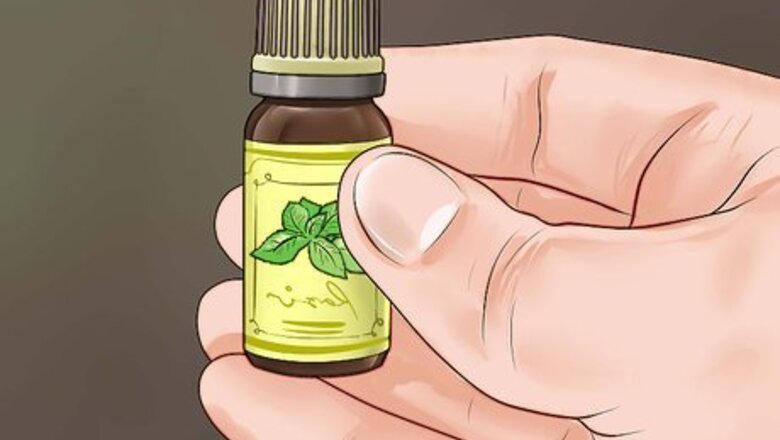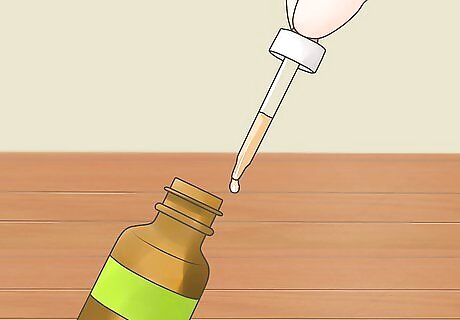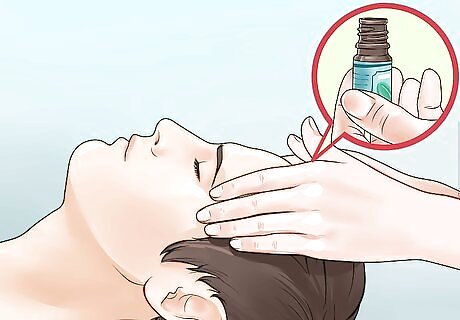
views
X
Trustworthy Source
PubMed Central
Journal archive from the U.S. National Institutes of Health
Go to source
[2]
X
Expert Source
Renee HughesCertified Professional Aromatherapist
Expert Interview. 14 April 2022.
To use peppermint oil, start by getting oil that is organic, pure, and safe for use. You can then use the oil by massaging it into your skin or inhaling it. If you experience any adverse side effects or the oil is not working for you, be sure to see your doctor for guidance.
Getting the Peppermint Oil

Look for organic, pure peppermint oil. Check that the oil has been cold pressed or steam pressed, as this means it contains only pure peppermint. Make sure the first, and preferably only, ingredient listed on the label of the oil is peppermint extract. You should also invest in organic essential oils only, as this will ensure the product is high quality. Avoid peppermint oil that has been solvent pressed, as it will usually contain additives like alcohol, acetone, and propane. You do not want to put these additives on or in your body.

Get peppermint oil in liquid form. You can find peppermint oil as a liquid in a bottle with a dropper or a slow release top.

Buy peppermint oil from a reputable supplier. Check that the supplier has clear contact information on the label and online. Read reviews of the supplier online to confirm they are legitimate. You can also reach out to aromatherapists and ask them to recommend a good brand that you can buy from directly. Avoid very cheap or inexpensive essential oils, as this may mean the product is substandard.

Speak to your doctor first if you are on other medications. Be cautious about taking peppermint oil if you are taking medication for diabetes or high blood pressure. It's always best to consult a licensed aromatherapist before you start any essential oil treatments, too. Do not use peppermint oil on the face or chest of small children. If you are pregnant or lactating, the use of peppermint oil is not recommended. Speak to your doctor before using the oil.
Using the Oil

Do a skin test before use. Before you apply the peppermint oil as a liquid to your skin, dilute it with a carrier oil and put a small amount behind your ear. Wait 10-15 minutes. If you do not develop a rash, irritation, or feel a burning sensation, you can then use the oil on the rest of your body. If you experience any adverse skin issues, you may be allergic to the oil or your skin may be too sensitive for the oil. If your skin is sensitive to peppermint even with the carrier oil, then an alternative method might be better for you. Never apply undiluted essential oils directly to your skin.

Massage the oil onto your forehead, temples, and behind your ears. Putting the oil directly on your skin will help your body absorb it fast. Place one to two drops of the oil on these areas. Use clean fingers to gently massage in the oil in small, circular motions. You can also try applying the oil on your neck, just below your ears, and your chest. Peppermint oil is really great for sinus headaches, too. Apply the oil to your skin several times a day—it works really well to clear the sinuses. You can also blend peppermint oil with lavender oil before applying it topically. Lavender not only helps with the pain, but is also really good for your skin. Expert Answer Q When asked, “How do you use peppermint oil for headaches?” Ritu Thakur, MA Ritu Thakur, MA Natural Health Care Professional Ritu Thakur is a healthcare consultant in Delhi, India, with over 10 years of experience in Ayurveda, Naturopathy, Yoga, and Holistic Care. She received her Bachelor Degree in Medicine (BAMS) in 2009 from BU University, Bhopal followed by her Master's in Health Care in 2011 from Apollo Institute of Health Care Management, Hyderabad. Ritu Thakur, MA EXPERT ADVICE Answer from Ritu Thakur, MA: Dr. Ritu Thakur, an Ayurveda, responded: “Peppermint essential oil is well-known for its ability to relieve pain. For a headache, apply the oil directly to your temples and forehead for relief.”

Inhale the oil if you don't want to apply it to your skin. Hold the peppermint oil under your nose and take several deep breaths, inhaling the oil through your nostrils. Do this for at least one minute so you inhale enough of the oil. You should feel a tingling sensation in your nose as you inhale.

Wait 15-30 minutes for the oil to take effect. Lay down in a quiet, low-lit spot and close your eyes. Try to relax and stay calm so the oil can take effect. You may experience a cooling sensation on your skin or nostrils, but it should go away as the oil dissolves. The peppermint oil should work for at least 15-30 minutes. You can reapply or inhale the oil again as needed.
Seeing Your Doctor

Go to your doctor if you experience a rash or skin irritation. If you notice any redness, bumps, or a rash on the spots where you have applied the peppermint oil, talk to your doctor. You may be allergic to the oil or have a skin issue that interacts badly with the oil.

See your doctor if your headaches do not go away. If you are using peppermint oil and your headaches do not improve or go away, ask your doctor for guidance. They may recommend prescription headache medication if your headaches are severe or you are experiencing migraines that are too strong for peppermint oil to work.


















Comments
0 comment